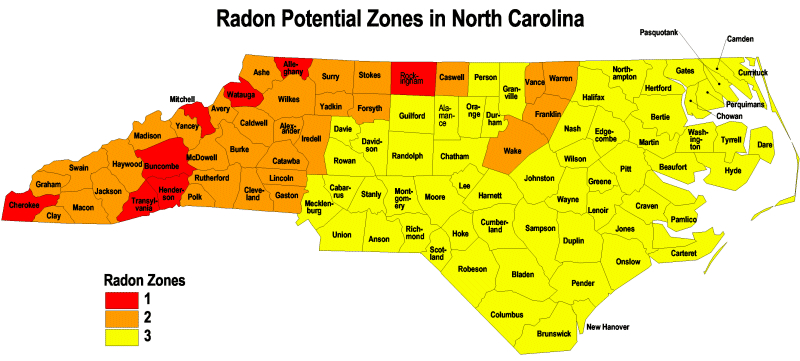
Radon levels can vary significantly between seasons, so different values are to be expected. In certain instances, such as may occur when measurements are performed in different seasons or under different weather conditions, the initial and follow-up tests may vary by a considerable amount. These recommendations are summarized in Exhibit 2-1. If the average of the initial and second short-term results is equal to or greater than 4 pCi/L, or 0.02 WL, radon mitigation is recommended. If the long-term follow-up test result is 4 pCi/L, or 0.02 WL, or higher, EPA recommends remedial action. On the other hand, short-term tests yield results more quickly and can be used to make mitigation decisions. The closer the long-term measurement is to 365 days, the more representative it will be of annual average radon levels. Long-term tests are conducted for longer than 90 days, and give a better estimate of the year-round average radon level. If the result of the initial measurement is between 4 pCi/L (or 0.02 WL) and 10 pCi/L (or 0.05 WL), the follow-up test may be made with either a short-term or a long-term method. An initial measurement result of 10 pCi/L (or 0.05 WL) or greater should be followed by a second short-term test under closed-building conditions. There are two types of follow-up measurements that may be conducted, and the choice depends, in part, on the results of the initial test. However, since radon levels change over time, the homeowner may want to test again sometime in the future, especially if living patterns change and a lower level of the house becomes occupied or used regularly.

If the result of the initial measurement is below 4 pCi/L, or 0.02 WL, a follow-up test is not necessary. Follow-up measurements are conducted to confirm that radon levels are high enough to warrant mitigation. If the short-term measurement result is equal to or greater than 4 picocuries per liter (pCi/L), or 0.02 working levels (WL), a follow-up measurement is recommended. Closed-building conditions ( Section 2.3.2) should be initiated at least 12 hours prior to testing for measurements lasting less than four days, and are recommended prior to tests lasting up to a week. Short-term tests are conducted for two days to 90 days. An initial short-term test ensures that residents are informed quickly should a home contain very high levels of radon. The strategy begins with an initial measurement made to determine whether a home may contain radon concentrations sufficient to cause high exposures to its occupants.ĮPA recommends that initial measurements be short-term tests placed in the lowest lived-in level of the home, and performed under closed-building conditions. This measurement strategy is intended to reduce the risk to public health from exposure to radon in air in homes. EPA 1992a) presents a measurement strategy for assessing radon levels in homes for the purpose of determining the need for remedial action.

The Citizen's Guide to Radon (EPA 402-K-92-001 U.S. Section 2: DISCUSSION OF GUIDELINES PRESENTED IN CITIZEN'S GUIDE TO RADON 2.1 Protocols for Radon and Radon Decay Product Measurements in Homes - Section One


 0 kommentar(er)
0 kommentar(er)
